An Lushan and Imperial Guardsman – Blandford Warriors Episodes 8 & 9
If you’re into your medieval history you WILL NOT have heard of these models. That’s cos they’re not medieval at all. Welcome to my next two classic Citadel Miniatures from the range based on the 1987 Medieval Warlords book.
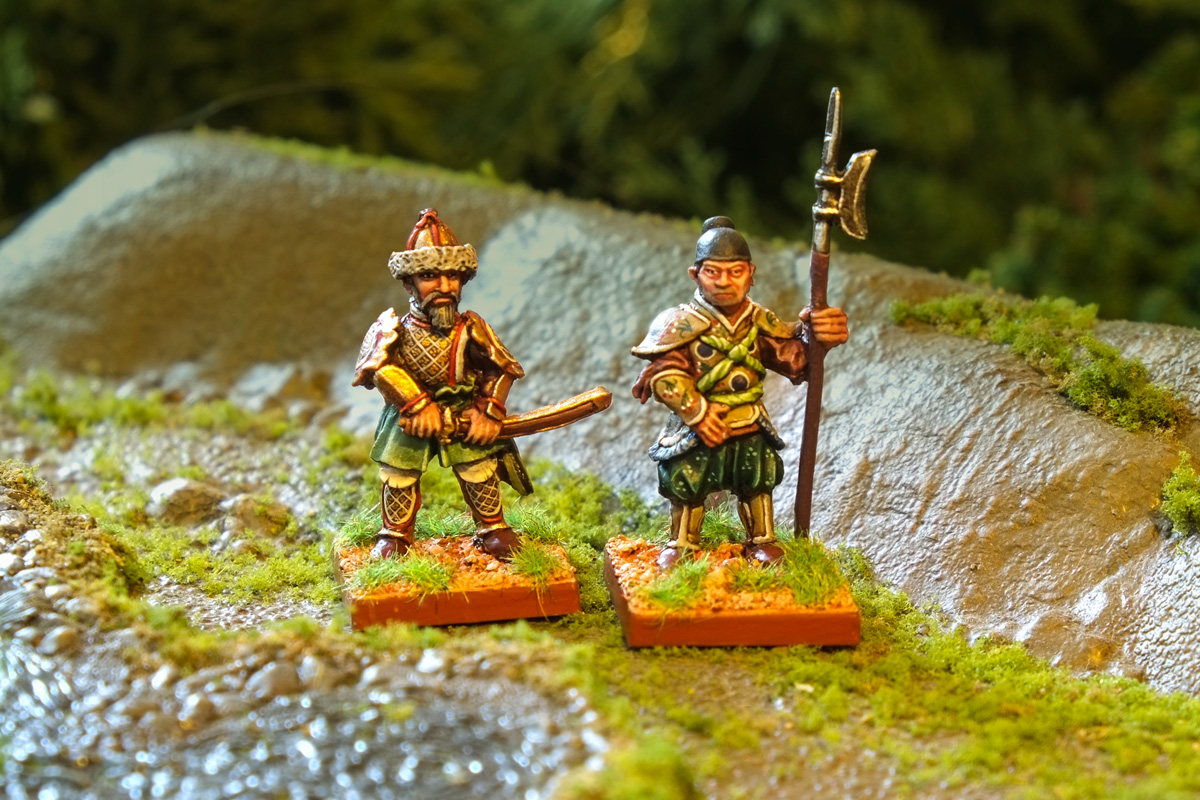
An Lushan and Imperial Guardsman on the lower reaches of the Yellow River.
So, I have beef with An Lushan being classified as “Medieval” as it’s a specifically European term for a historical period, and China ain’t Europe. Calling An Lushan a Medieval Warlord is like calling Richard the Lionheart an Imperial Chinese Warlord. I imagine the publishers had a shortlist of even less suitable titles for the book.
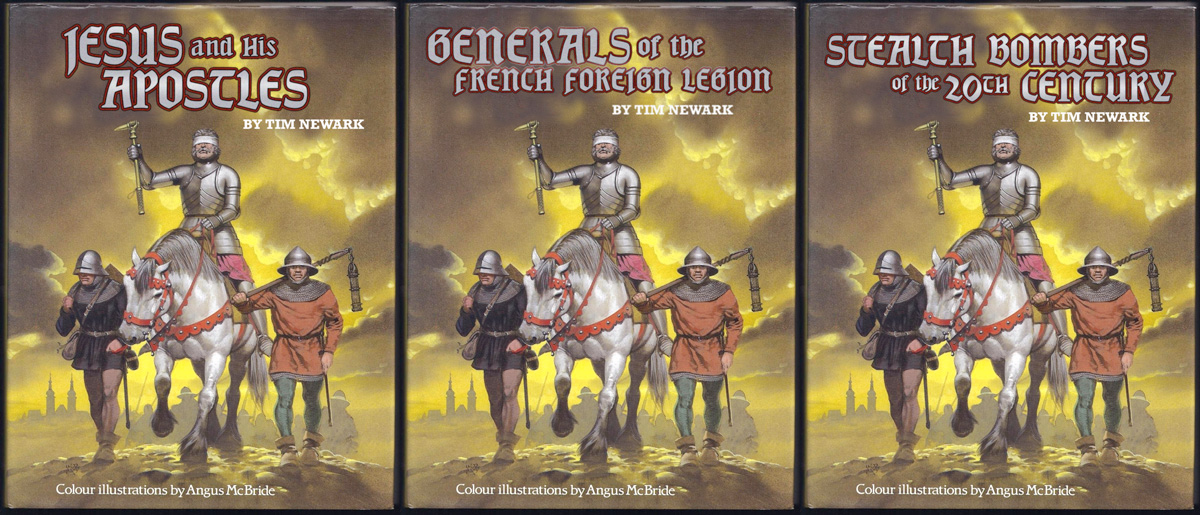
“Okay, sod it, we’ll go with Medieval Warlords.”
With the historian’s pedantry out of the way, who are these two Medie… classic Citadel Miniatures?
An Lushan
An Lushan was possibly Mongol. Possibly Turkish. Possibly Liverpudlian (going off the model’s uncanny resemblence to Ringo Starr). What we can definitely say is he wasn’t Han Chinese as he was allowed to rise to power as a regional military governor in 8th century China when policy was to keep these powerful posts away from the capital’s politicians to prevent rebellion.
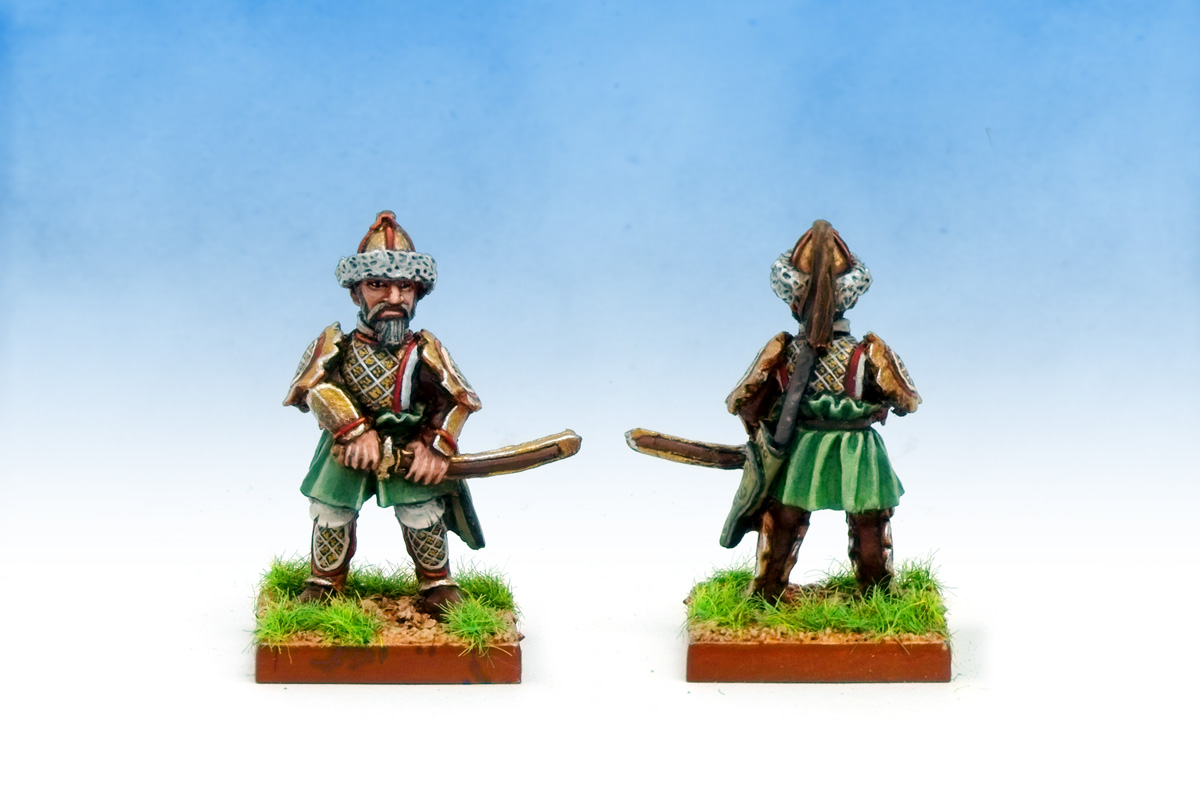
“In the town where I was born, lived a man who sailed to sea.”
However, in 755, An Lushan’s previously amazing relationship with Tang Dynasty soured. He marched on the heartland cities and declared himself emperor of his own brand new dynasty. This was the An Lushan Rebellion, which was one of the bloodiest wars of all time – the Tang Empire was bigger than even the Roman Empire at its height, and the scale of slaughter as cities were toppled and populations massacred reached perhaps into the tens of millions. Fascinatingly, the rebellion seems to have been sparked not by lofty political ideals, or a popular dissatisfaction with the ruling elite, but by a concern (or possibly paranoia) that the Tang Dynasty’s Chief Minister was personally out to get An Lushan.
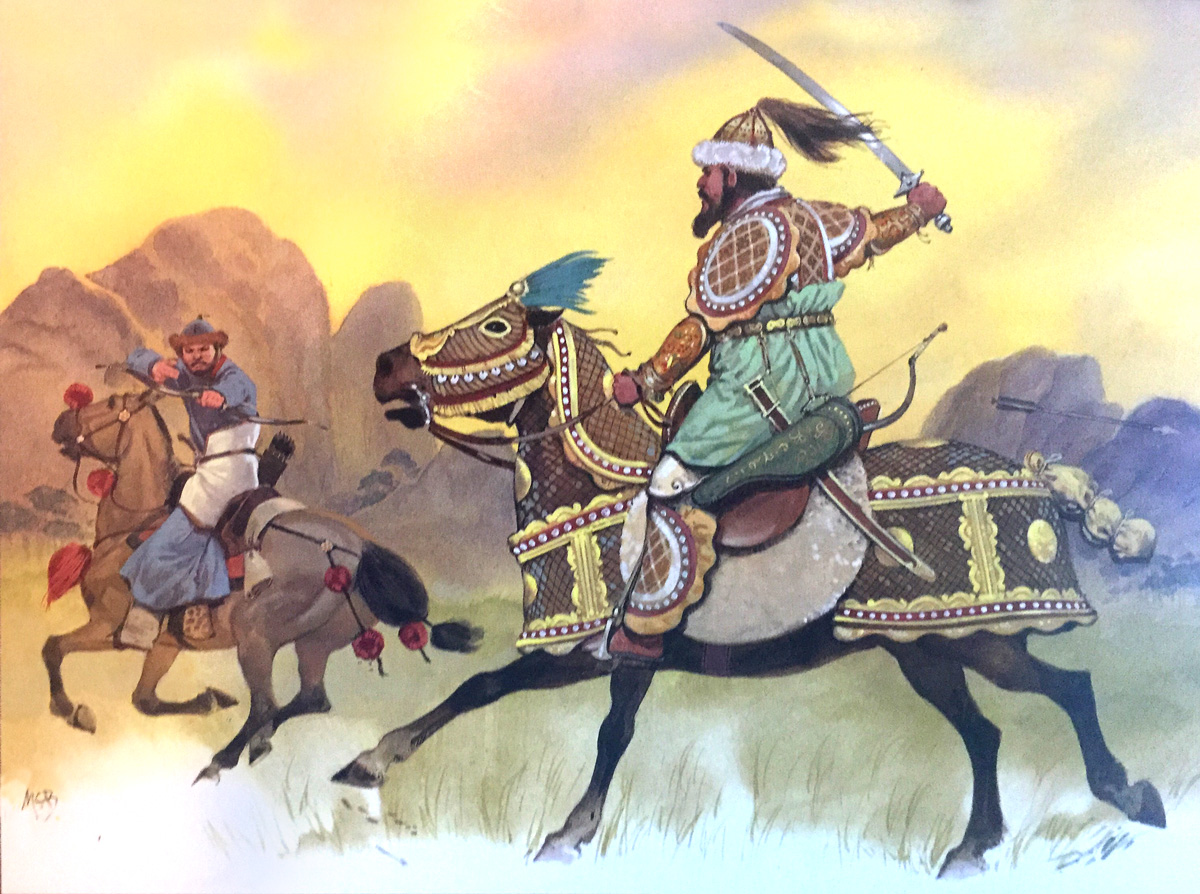
An Lushan pursues a Khitan Mongol beyond the Great Wall on the north-east Chinese border, 735.
The Tang Emperor fled as the rebels stormed city after city. But as An Lushan’s paranoia increased and his health worsened, he became a vulnerability and was assassinated by his own son (a surprisingly common fate in Imperial China). The Tang Dynasty was severely weakened by the uprising, and it marked the beginning of the end for China’s golden age of civilisation.
But who had opposed An Lushan? It was…
Imperial Guardsmen
By the time of the An Lushan Rebellion, the Tang military was split between militia on the Empire’s frontiers (which made up the bulk of An Lushan’s forces), and the Imperial Guard who were permanently garrisoned at the capital city and the Imperial palaces. However, as with Ancient Rome’s Praetorian Guard, an elite fighting force concentrated at the seat of Imperial power could lead to violent coups.
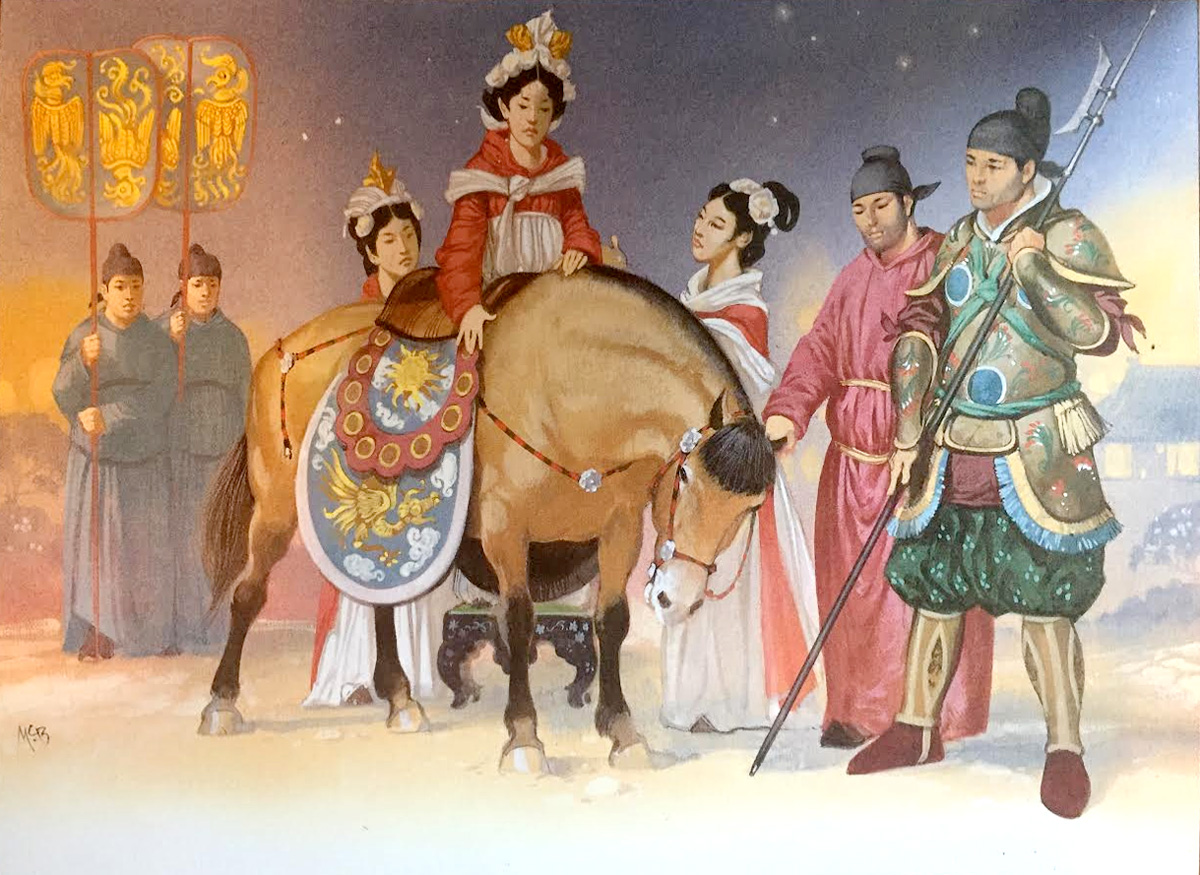
Yang Guifei – the Emperor’s consort – and the Imperial Guard prepare to leave Ch’ang-an before the army of An Lushan, 756.
The Imperial Guard certainly proved wilful during Emperor Xuanzong’s time – as they escorted Yang Guifei (the Emperor’s favourite consort) away from the rebels’ pillaging of the capital city they blamed her personally for their military misfortunes and demanded her immediate death. Needing to keep his elite guard on side, the Emperor consented and Yang Guifei was strangled.
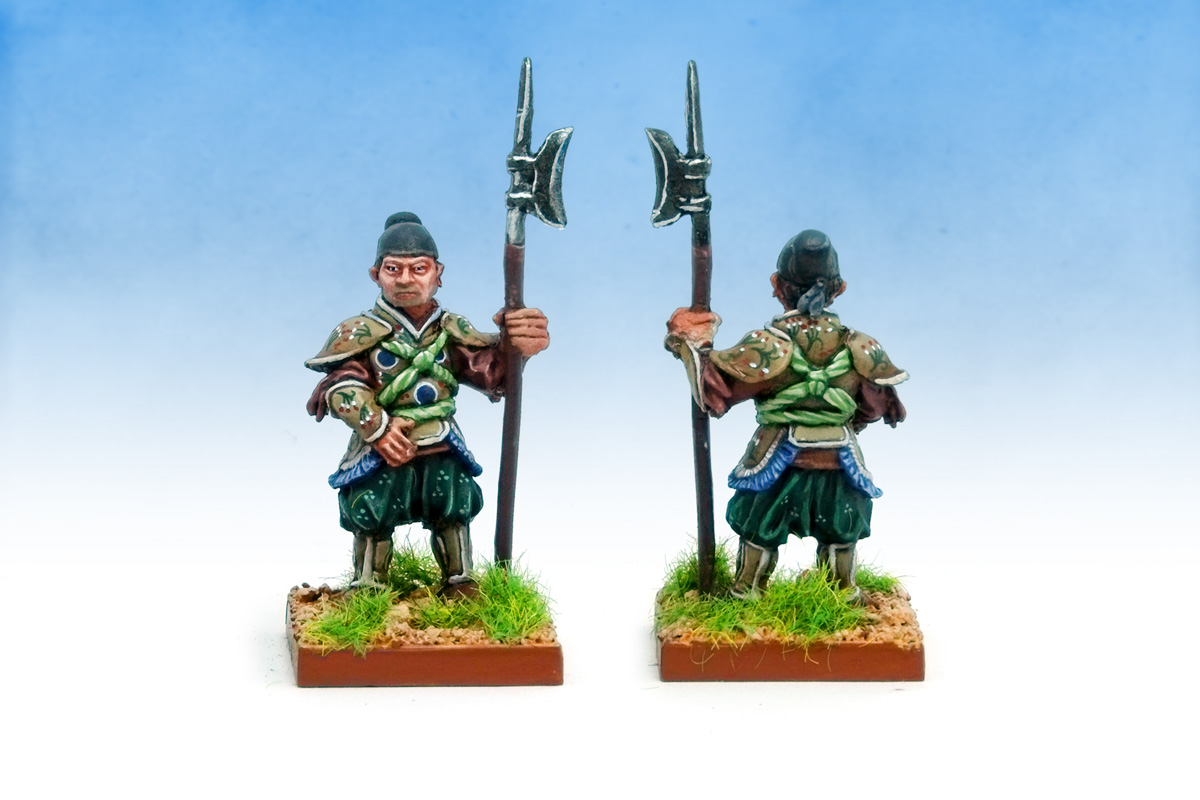
Imperial Guard circa 736.
I’ve freehanded floral patterns onto the Imperial Guard’s decorated leather armour to match the Angus McBride colour plates from the book. I enjoyed painting the stubble – all you’ve got to do for the five o’clock shadow look is shade and highlight the skin as normal then glaze the manly areas with a warm mid-grey (for example Skavenblight Dinge).
Blandford Warriors Assemble!
So that’s nine of the twelve Blandford Warriors painted. I’m enjoying the tour around history and the opportunity to dabble with different periods without having to collect dozens upon dozens of figures for gaming.
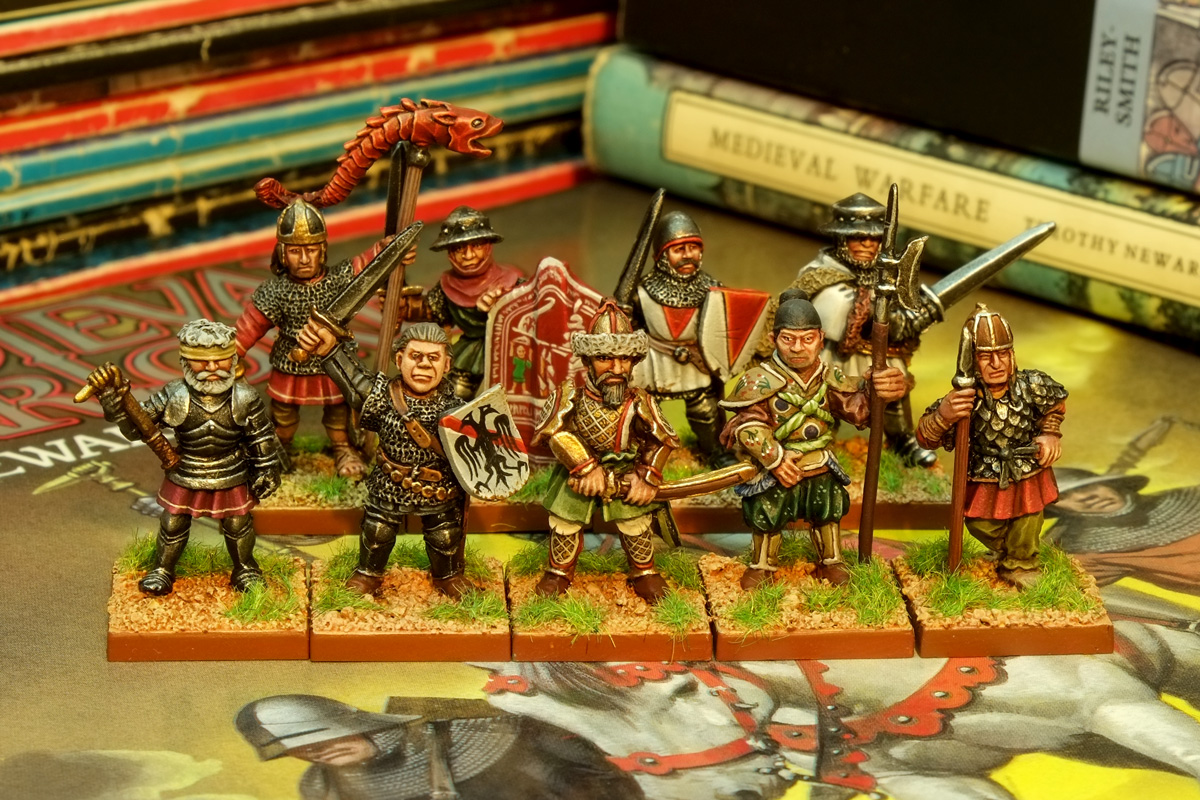
Left to right: Jan Žižka, Bucellarius of Majorian, Betrand du Guesclin, Taborite Infantryman, An Lushan, Sir John Chandos, Imperial Guardsmen, Teutonic Knight and Alan Horseman.
I’m looking forward to working on the final trio of Blandford Warriors to complete this historical wargaming project!

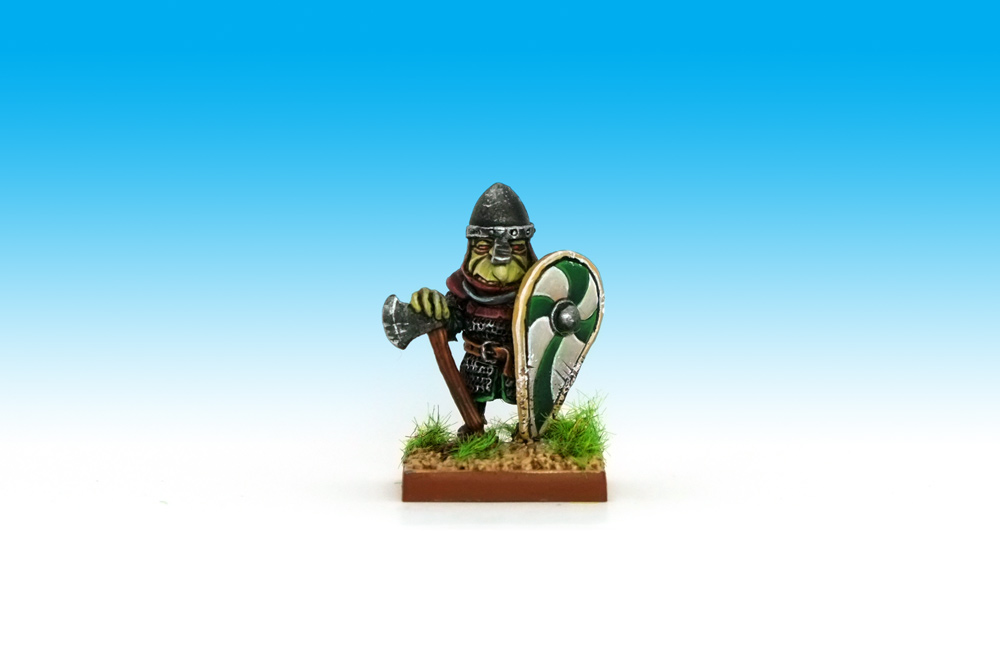
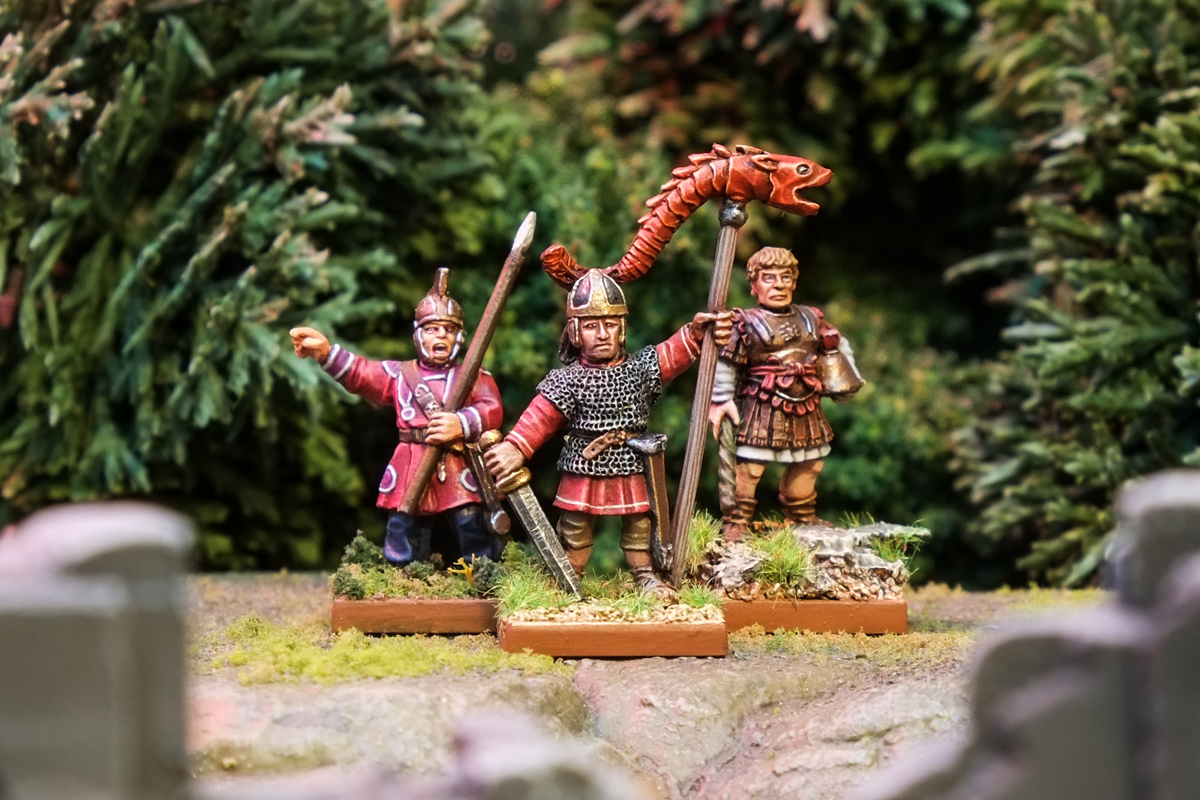
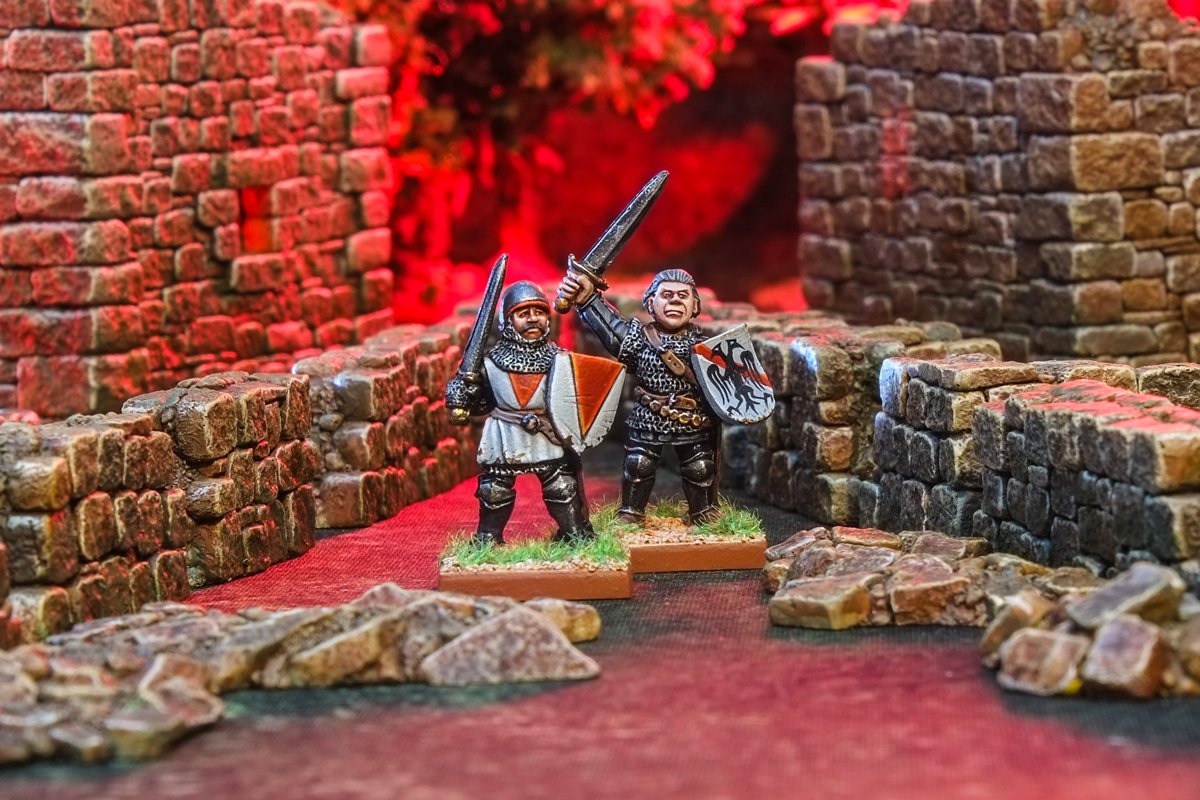
Beautiful detail work on these.
The milky jade coloured elements on the guardsman set the scheme off very nicely.
Thanks Paul! It’s one the boons of following an established scheme is you mix up colours you don’t normally paint and learn new recipees. It stops you doing the normal “Oh, it’s a spear staff, I’ll use my regular brown”.
Dat freehand. Dem colours. I’m liking these guys a lot. I wish you would make a whole army of them, many thousands strong.
Cheers Crooksy! The part of my brain that’s been conditioned by years of Games Workshop marketing keeps telling me the Imperial Guardsman’s basic pose would make a unit of him very easy to build…
Those are great, but omg those title changes. LMAO
Thanks! I sorely wanted to make my point about about the miscalssification without it just devolving into a pedant’s rant.
But we love pedantic rants–the more obscure and esoteric the topic the better. Great work on these though and interesting reading.
This post has it all. A history lesson, that beautiful freehand on the guards armor and a mini tutorial on stubble. I like it.
I think some step-by-steps on stubble is something that would make a lovely set of photos. I’ll bear that in mind next time I paint a manly man chin.
“Stealth bombers of the 20th century” is a great name for a medieval character in an RPG setting. I would love to subject my fellow gamers to his jarring moniker every session ;)
Interesting history lesson Curry, and the mini’s are, as always, much better than mine in every way.
Cool work brother :)
“Stealth Bombers of the 20th Century” sounds like the books you get in discount bookshop The Works over here. “Was £49.99 now £4.99”.
Another fab pair of warriors in addition to some fascinating history.
The floral designs, patterning and details like the stubble catapult these onto another level. The nine all together are a very pleasing sight indeed.
Thanks! It’s almost a shame that there’s only one of these to paint as I’ve gotten the floral patterns down to a technique that would work really well painted across a regiment.